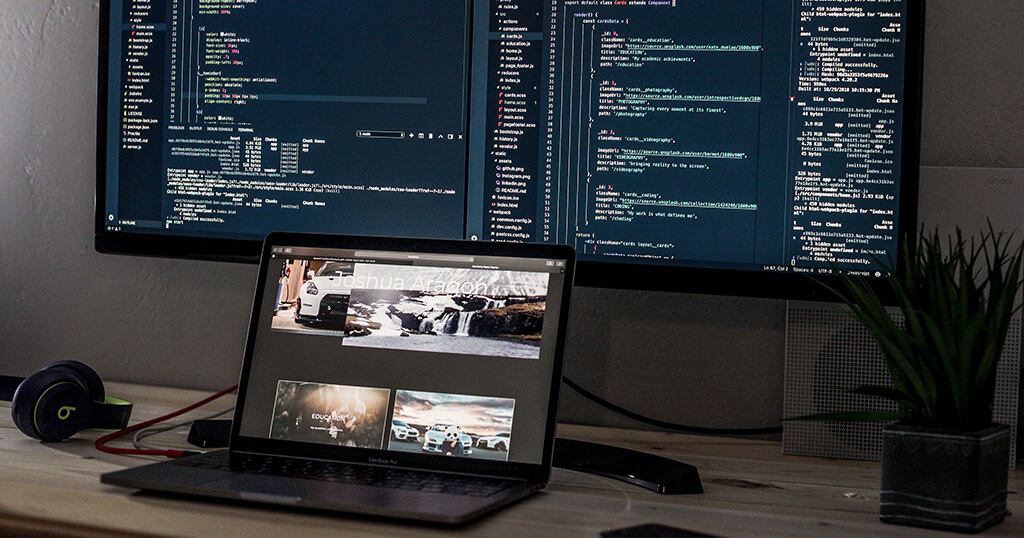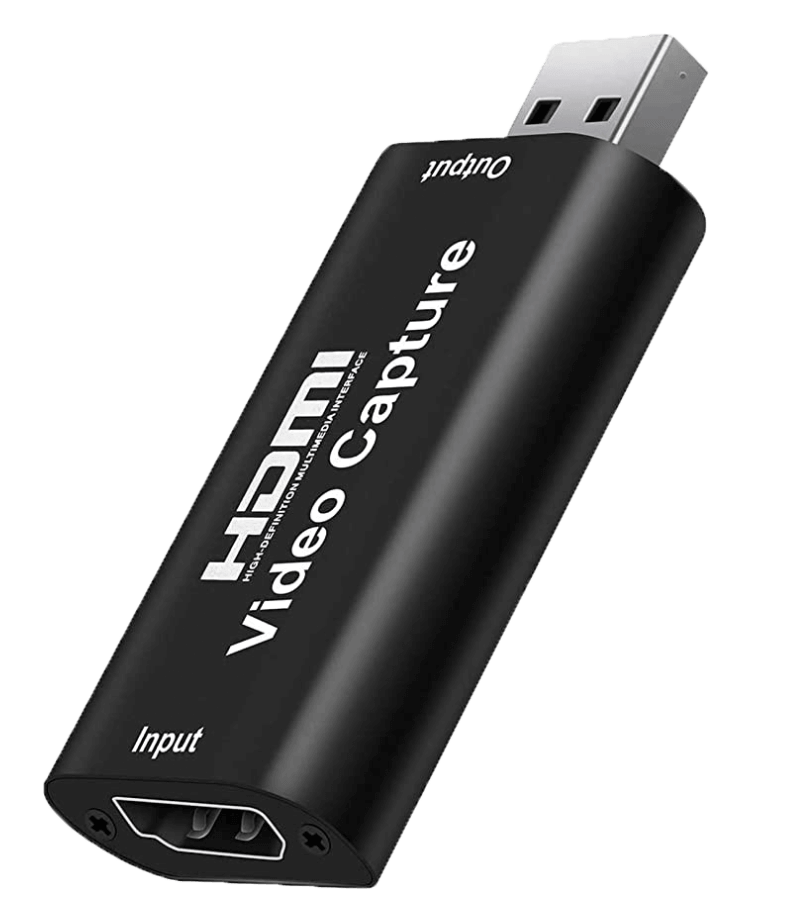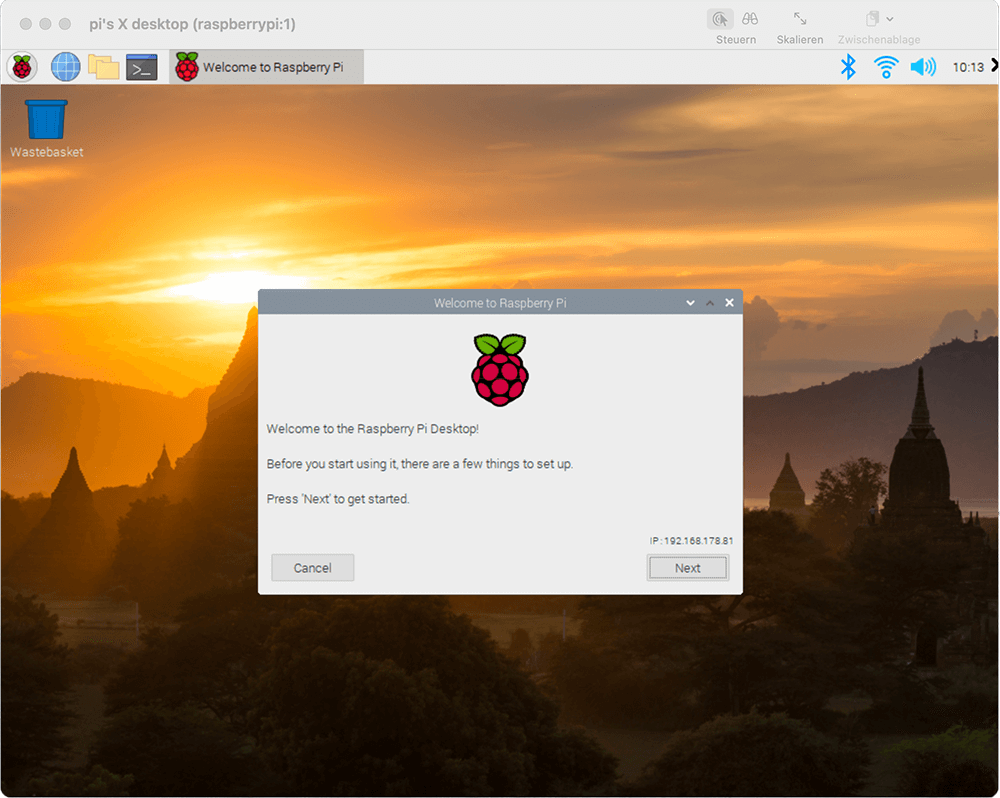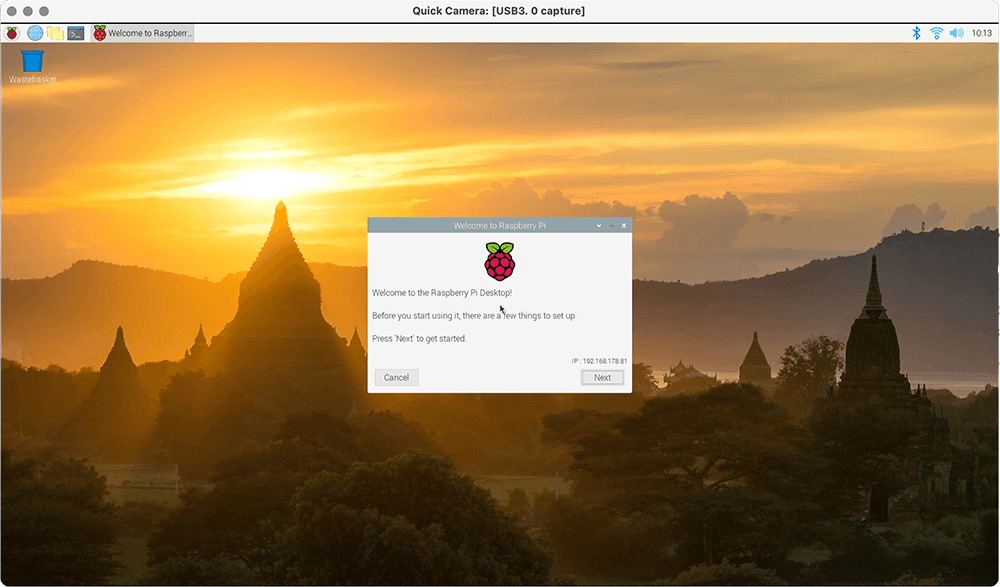I recently came across a piece of technology that is very cheap but most useful.
It is a small HDMI Video Capture USB Stick that allows me to output the Raspberry Pi HDMI video signal to my iMac, either full screen or as a window. I am most intrigued by this $/€ 10 device, and I thought I’d share it with you.
Background
When I test, configure, or program on my Raspberry Pi, I almost always access the Pi through my Mac Terminal app. I never have a keyboard or mouse connected.
I typically borrowed my wife’s secondary monitor whenever I needed to see the actual screen output, to test, e.g., the picture frame functionality.
No more. Now I simply connect the Raspberry Pi HDMI output to this USB stick, and I have a super crisp image on my iMac. No need to lug around monitors around the house anymore and to have multiple screens on the desk.
The title of this blogpost is actually slightly limiting. This solution works with any Mac, PC, or Linux computer. All it takes is the USB stick and a free app.
But you can use VNC for that, you might say. For certain use cases, maybe. But I will show you where the big difference between VNC and this solution lies.
The HDMI Video Capture Card
That little device that I am talking about is called HDMI Video Capture Card, but it’s actually a USB stick and not a card. But since these things used to be a lot bigger, they had to be inserted as a card in a computer slot. But these days, everything is highly integrated, and many things fit onto a USB stick.
There are many models out there and they all cost between 10 and 20 $/€. They all seem to work with the MacroSilicon MS2109 HDMI-USB chip, so it probably doesn’t matter much which one you pick. I bought this one.
This is an HD (1920 x 1080 px) stick, you can also get 4K (3180 x 2160 px) ones. The HD version also accepts 4K signal input but converts it to HD.
No installation of any drivers is necessary. Just connect you Raspberry Pi HDMI cable with the adapter and plug in into a free USB port.
What you do need is a small app called Quick Camera. This app written by Simon Guest is highly rated on the App Store, up to date, and free.
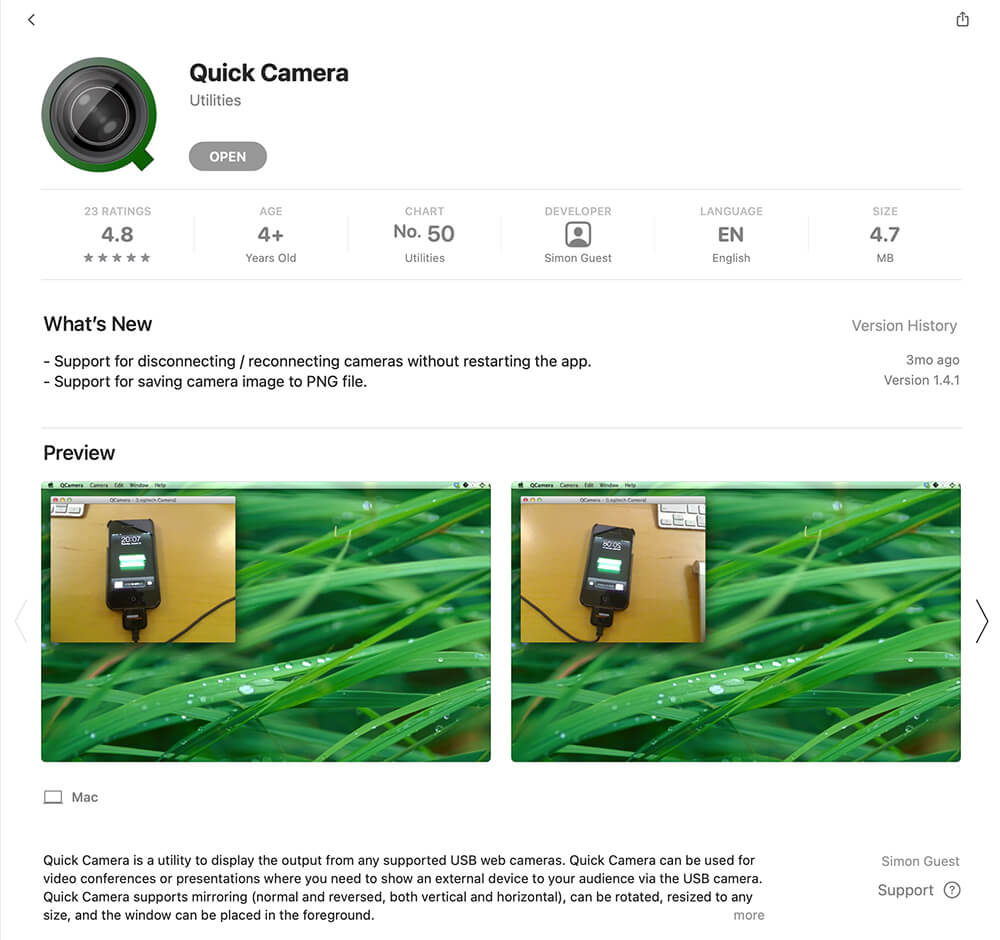
It was originally meant to be a utility to display the output from USB cameras. But you can connect any HDMI output to it, like a Raspberry Pi.
All you need to to do is to select the Source and you are connected.
If you don’t see anything, you have to reboot your Raspberry Pi first as some models turn off the HDMI output if no monitor is detected at boot.
You can adjust the size of the screen, make it borderless, or full screen. The output is tack sharp, and I didn’t notice any latency. The frame rate is the same 30 fps that I have configured on my Raspberry Pi.
You can rotate, mirror the output, or save as a photo.
The one thing that doesn’t work, because this is just an HDMI input device, is the use of a keyboard or mouse. But to test digital picture frames software, I don’t need that anyway. But you can, of course, connect a keyboard and a mouse to your Pi while you look at the screen on your Mac.
I am sure there is a similar app in the Windows App Store. If you know of one, please let me know and I will add it here.
Now let’s talk about why using VNC is not an alternative option for me.
But you can use VNC for that, you might say. For certain use cases, maybe. But I will show you where the big difference between VNC and the video capture card lies.
The VNC alternative
Virtual Network Computing (VNC) is a graphical desktop sharing system that allows you to mirror a remote computer screen.
The Raspberry Pi supports it, but you need to install a package and allow it in the Pi configuration settings.
Here is how this works.
On the Pi, type
sudo raspi-configand choose “3 Interface Options”, “P3 VNC” and enable the VNC Server.
This will install the RealVNC Server, which I never managed to get to work on my Mac. So, I always use the TightVNCServer instead, which is explained below.
While you are in the config settings, make sure that you boot to the desktop, as VNC only works in the graphical user interface mode. (1 System Options, S5 Boot /Auto Login, B4 Desktop Autologin)
Back in the console, type
sudo apt-get install tightvncserver -y && vncpasswdGive a VNC password, I believe it has to have a minimum of six letters.
When you are are asked
Would you like to enter a view-only password (y/n)? just enter “n”.
To start a VNC session, enter
vncserver :1You can add a few more config settings to this command, but the short command is typically enough for our purpose.
To end it, you type
vncserver -kill :1If you get any error message, have you booted the Pi to the GUI?
To connect to it, go to your macOS finder and under “Go” say “Connect to Server”. Type
vnc://192.168.178.81:5901and replace the above IP address with the one of your Raspberry Pi. Enter your password, and you can see the screen.
Video Capture Card vs VNS
I do prefer the Video Capture Card solution for two reasons.
First, it works in both console and GUI mode. I can observe the boot process of the console, which is not possible with VNC.
If you are using the image viewer Pi3D on a Raspberry Pi 4, it requires the console mode, not the GUI. And GUI will not work with VNC. But even on a Pi 3, you couldn’t verify the smooth crossfading transitions as the frame rate is too low.
Second, the image quality is vastly superior. The VNC image is rather blurry and has a frame rate of only 1-2 fps compared to 30 fps with the full HD or 4K resolution of the video capture stick.
The advantage of VNC is that you can use your Mac keyboard and mouse to control your Raspberry Pi and that you can use it on remote computers as long as you can access them via IP.
Conclusion
For only $15, you can save the expense for an external monitor for your Raspberry Pi if you only need the monitor for testing anyway. The HDMI Video Capture Card works very well, and I am glad I found this little gadget.
Was this article helpful?
Thank you for your support and motivation.
Related Articles
- The ultimate guide on using Samba filesharing on the Raspberry Pi with special tuning for Macs
- Which Raspberry Pi model should you get for your digital photo frame?
- How to find the IP address of a new device in your network with Angry IP Scanner
- Stay Connected: Enhancing Raspberry Pi Wi-Fi Stability by Turning Off Power Management
